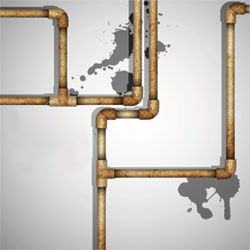
Drinking Water Contaminants - Lead
Actions You Can Take To Reduce Lead In Drinking Water Flush Your Pipes Before Drinking
Anytime the water in a particular faucet has not been used for six hours or longer, "flush" your cold-water pipes by running the water until it becomes as cold as it will get. (This could take as little as five to thirty seconds if there has been recent heavy water use such as showering or toilet flushing. Otherwise, it could take two minutes or longer.) The more time water has been sitting in your home's pipes, the more lead it may contain.

Only Use Cold Water for Consumption
Use only water from the cold-water tap for drinking, cooking, and especially for making baby formula. Hot water is likely to contain higher levels of lead.The two actions recommended above are very important to the health of your family. They will probably be effective in reducing lead levels because most of the lead in household water usually comes from the plumbing in your house, not from the local water supply.
Have Your Water Tested
After you have taken the two precautions above for reducing the lead in water used for drinking or cooking, have your water tested. The only way to be sure of the amount of lead in your household water is to have it tested by a competent state certified laboratory. Your water supplier may be able to offer information or assistance with testing. Testing is especially important for apartment dwellers, because flushing may not be effective in high-rise buildings with lead-soldered central piping.
For more details on the problem of lead in drinking water and what you can do about it, read the questions and answers in the remainder of this booklet. Your local or state department of health or environment might be able to provide additional information.
Read Next: Health Risks of Heavy Metals





